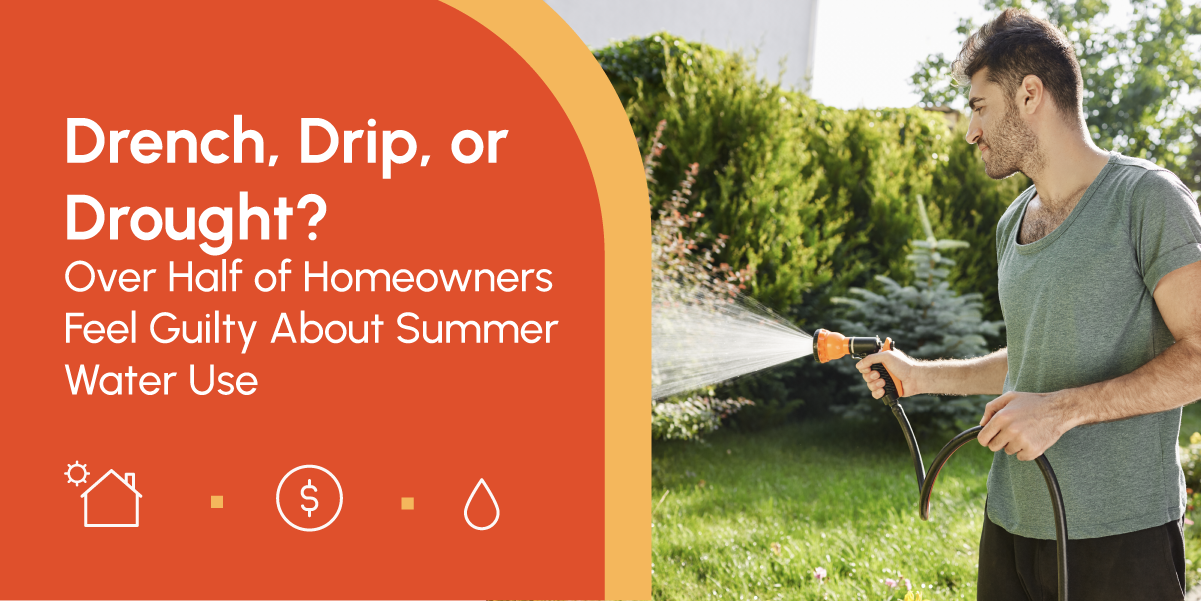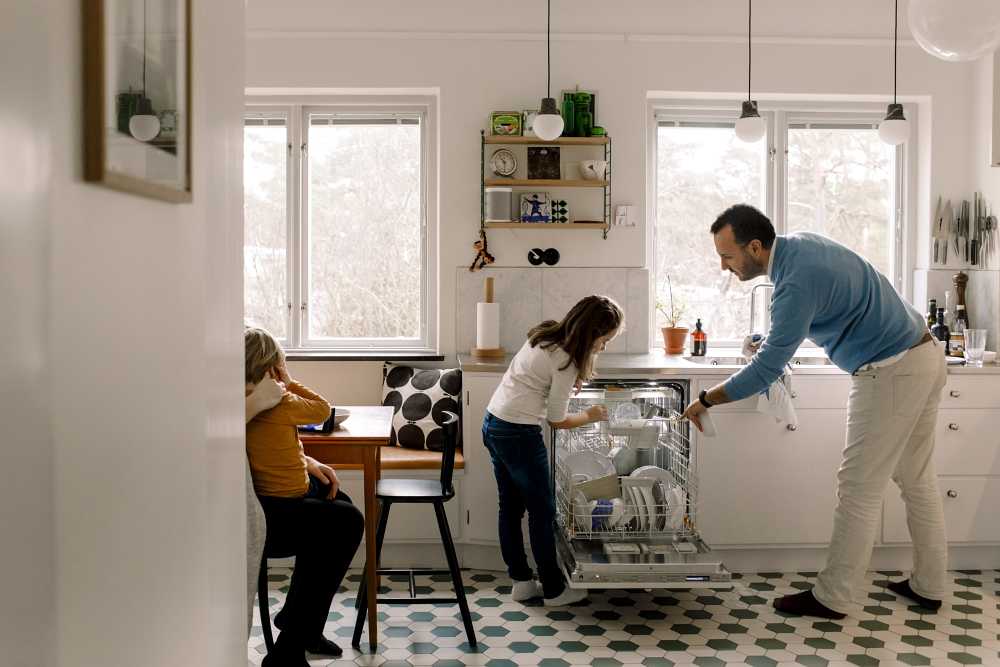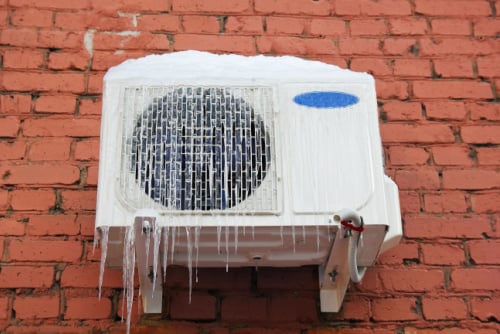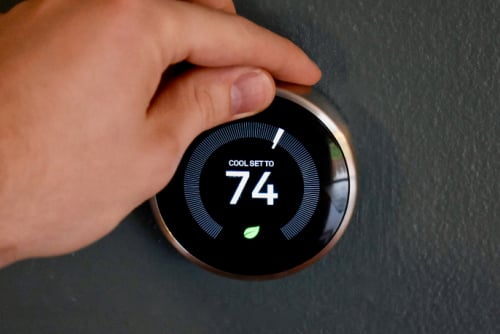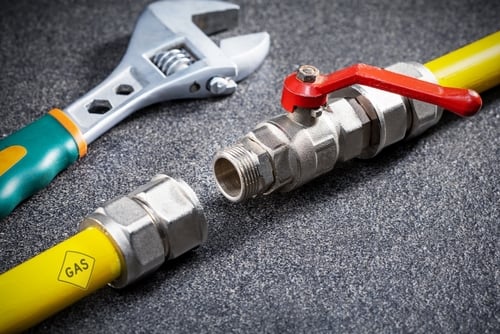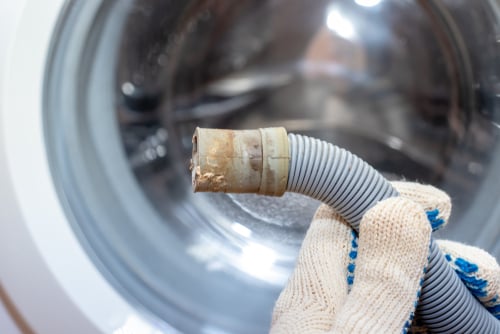Water bills are getting expensive, and American homeowners are taking notice. With summer driving up both water use and costs, families are looking for ways to cut their bills without neglecting their homes. We surveyed homeowners to find out what they're paying, how they're saving water, what upgrades they're making, and how they're handling rising utility costs.
Methodology
In May 2025, this survey was conducted among 1,002 homeowners across the United States. Respondents included 49% women, 50% men, and 1% nonbinary individuals. Ages ranged from 18 to 75 with an average age of 46.
53% of Homeowners Feel Guilty About Summer Water Use
Summer watering comes with a side of guilt for most homeowners. More than half (53%) feel bad about how much water they use during hot months, and nearly 1 in 4 have even side-eyed their neighbors for watering during drought conditions. The good news? All that awareness is paying off, as 60% of homeowners are cutting back on water use this year.
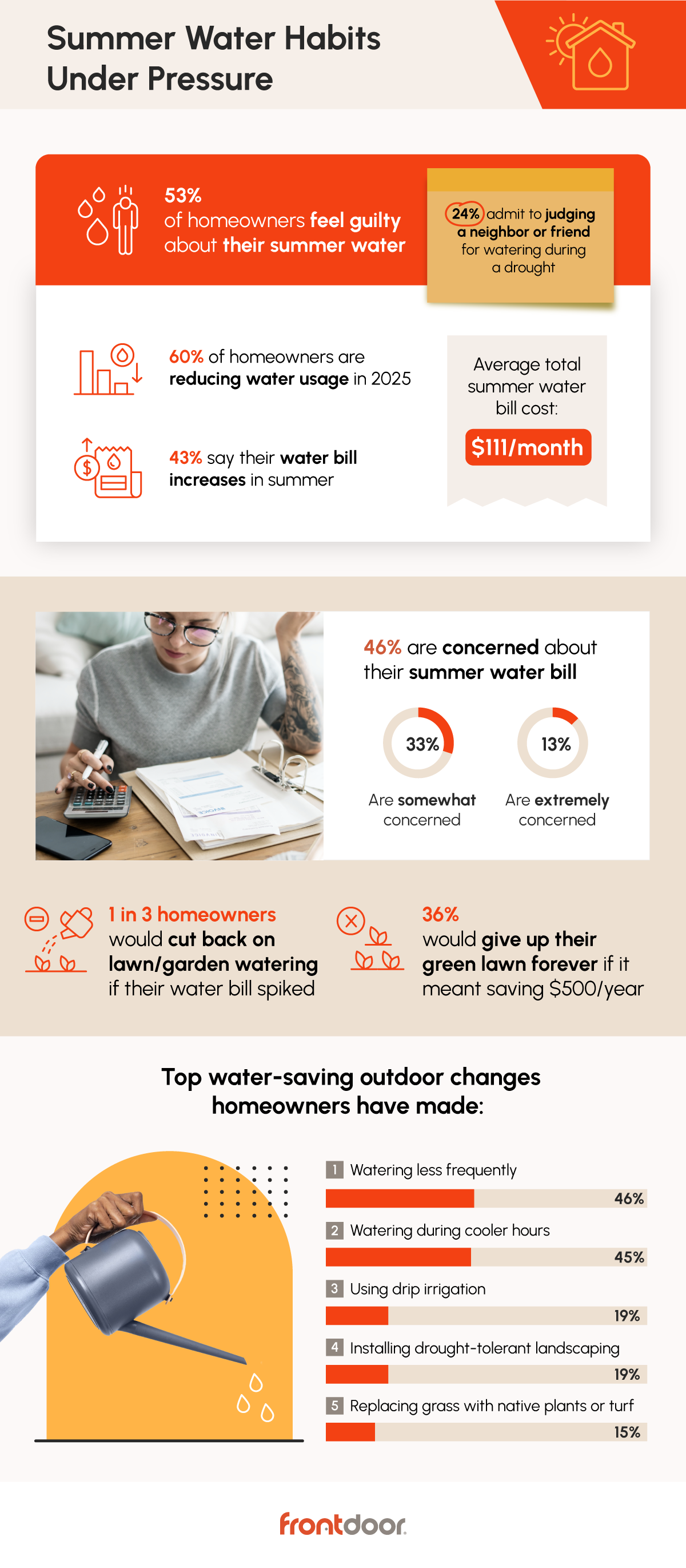
The summer surge hits wallets hard. Nearly half of homeowners (43%) see their water bills jump during hot months, with the average summer bill hitting $111 monthly. Those higher costs have almost half of all homeowners worried, in that 1 in 3 are somewhat concerned, while more than 1 in 10 are extremely worried about what summer watering will cost them.
When water bills spike, homeowners don't hesitate to make changes. One in three would immediately cut back on watering their lawn and garden if costs increased, and 36% would permanently eliminate their green lawn if it meant saving $500 annually.
Top water-saving outdoor changes homeowners have made:
- Watering less frequently: 46%
- Watering during cooler hours: 45%
- Using drip irrigation: 19%
- Installing drought-tolerant landscaping: 19%
- Replacing grass with native plants or turf: 15%
Inside the Home: Creative Cuts and Water-Smart Living
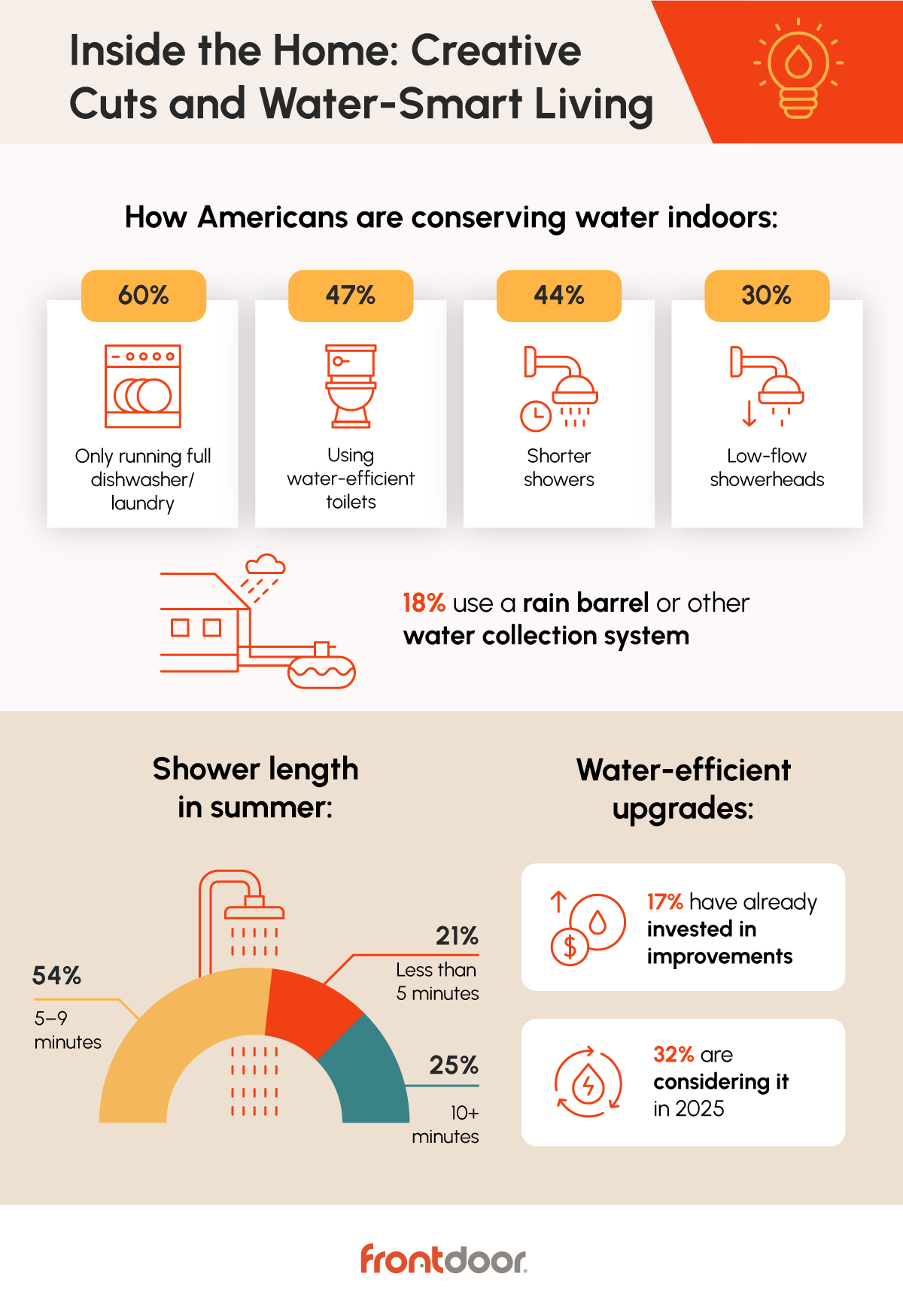
While yards and gardens grab attention during summer months, the real water-saving action often happens behind closed doors. When it comes to water conservation inside the home, Americans focus heavily on efficiency improvements and smart usage habits. The top water-saving strategy is simple: make every load count. Our data found 60% of people now wait to run their dishwasher and washing machine until they're completely full.
How Americans are conserving water indoors:
- Only running full dishwasher/laundry loads: 60%
- Using water-efficient toilets: 47%
- Shorter showers: 44%
- Low-flow showerheads: 30%
Nearly 1 in 5 homeowners have also set up rain barrels or other water collection systems to capture free water. Important note: if you’re thinking about rain barrels, check your local and state regulations to see if there are any restrictions on use.
When it comes to summer showers, many people are watching the clock: 54% keep showers between 5-9 minutes, 21% take quick showers under 5 minutes, while only 25% still take longer 10+ minute showers.
Homeowners are opening their wallets for water-saving upgrades. While 17% have already invested in water-efficient upgrades, 32% are considering improvements in 2025, showing there’s strong market demand for water-saving home tech.
How Far are Homeowners Going to Reduce Water Bills?
When push comes to shove, homeowners know what matters most to them. Given the choice between ditching their green lawn or cutting their shower time in half, half would rather give up the grass. Most extreme measures taken to lower bills:
- Washing clothes less often/full loads only: 55%
- Limiting toilet flushing: 28%
- Timed showers: 23%
- Reuse cooking water for plants: 20%
- Skipping showers: 16%
Nearly 1 in 10 homeowners have also used the classic water-saving method of placing bricks in toilet tanks to reduce water usage per flush.
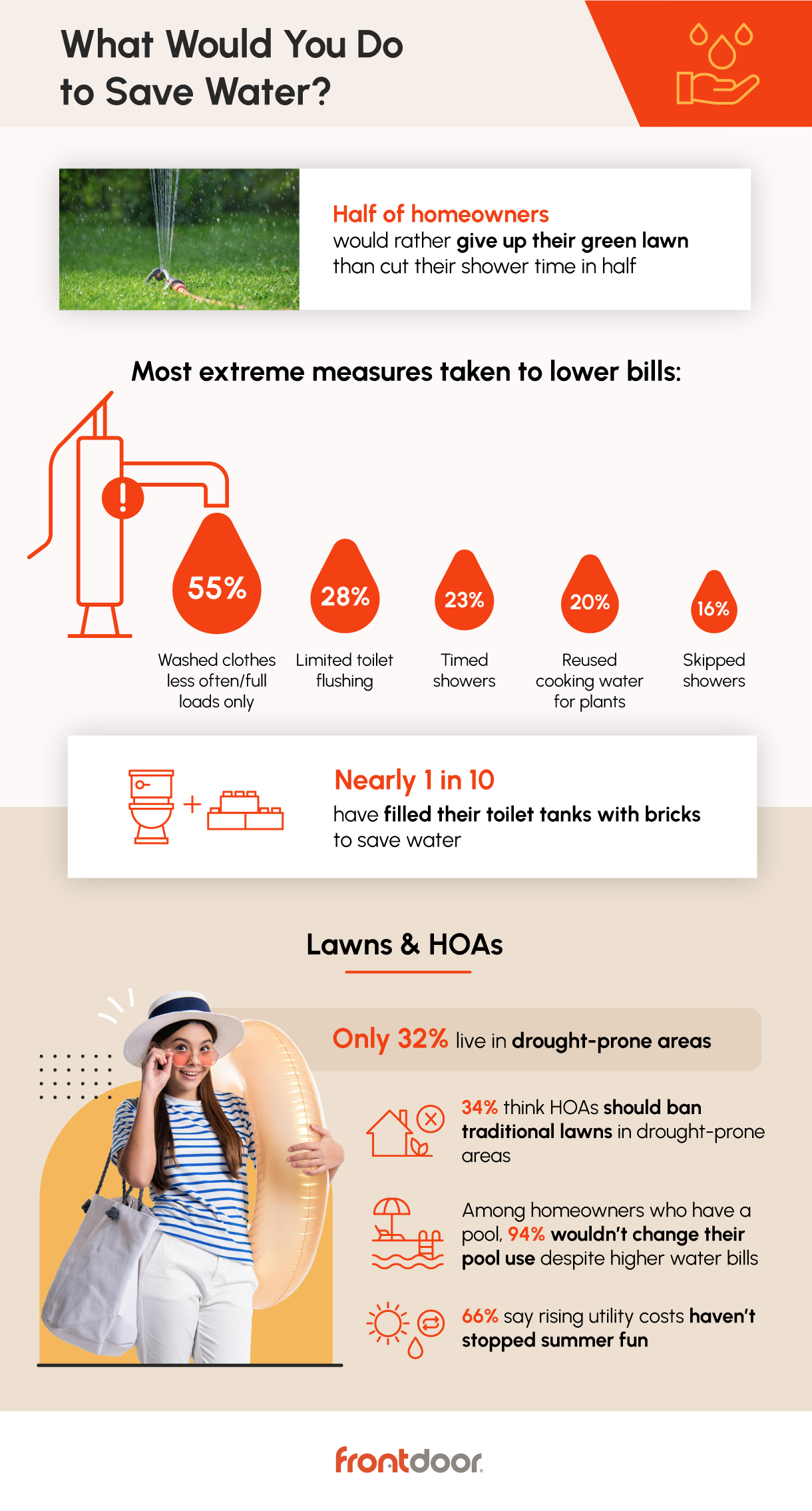
Lawns, Pools & HOAs: Property Management Considerations
Despite just 32% of homeowners residing in drought-prone regions, rising utility costs have made water conservation a nationwide priority.
Homeowners associations (HOAs) are stepping into the conversation more frequently. Over one-third of homeowners now support HOA policies that would ban traditional grass lawns in areas where water is scarce.
Pool owners, however, remain committed to their backyard oasis. Nearly all (94%) pool owners say they won't cut back on pool use even with higher water costs, and 66% continue their usual summer routines despite rising bills.
The Bottom Line: Smart Water Use is Here to Stay
As utility costs continue climbing, the homeowners leading the charge on conservation today are likely setting the standard for how we'll all think about water use tomorrow. Whether it's a simple habit change or a major landscape overhaul, every drop saved is money back in the bank and a step toward more sustainable living.
Was this article helpful?
